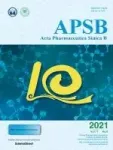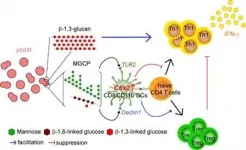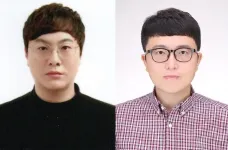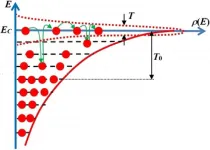Babies can see things that adults cannot
Visual perception changes drastically in the second half of the first year of life
2021-06-25
(Press-News.org) We can generally recognize an object, even if it is presented for a very brief time. However, if another object appears immediately following the first object, the perception on the first object is impaired such that we do not notice its existence. This perceptual phenomenon, called "visual backward masking," is used in vision science to study how visual perception is processed in the brain. Interestingly, this phenomenon occurs even if the second object does not spatially overlap the first object, such as a contour or four dots surrounding the object.
The occurrence of this phenomenon is assumed to be due to a disruption of "feedback processing." When we see something, visual information is serially processed from lower to higher visual areas in the brain in a bottom-up manner. However, top-down feedback processing, in which visual signals are sent back from higher to lower areas, also plays a critical role in visual perception. Visual backward masking is thought to occur owing to interference with feedback processing.
"We applied backward masking to infants aged 3-8 months to examine the development of feedback processing," says Yusuke Nakashima, a postdoctoral fellow at Chuo University in Tokyo and the study's lead author. "Recent studies in vision science revealed the importance of feedback processing in visual perception, but its development is poorly understood."
To test whether backward masking occurs in infants, the researchers presented images of faces on a computer screen and measured the length of time that infants spent looking at them. As infants tend to look longer at faces, researchers can test whether infants perceive faces by measuring their looking time. The faces were presented in two ways. In one condition, a face was followed by a mask image, in which infants would not see the face if backward masking occurred. In another condition, nothing appeared after the face; thus, infants would be able to see the face.
The researchers found that infants aged 7-8 months could not see faces followed by the mask, indicating that backward masking occurred, similar to adults. In contrast, infants aged 3-6 months could perceive faces even when the faces were followed by the mask image, indicating that masking did not occur and that younger infants could see faces that older infants could not.
"These results suggest that feedback processing is immature in infants younger than 7 months," says Nakashima. "That is, younger infants do not have feedback processing that backward masking should interfere, and thus, masking is ineffective for them." The results of the study demonstrated that the mechanisms for visual perception change drastically in the second half of the first year of life, from the bottom-up system to the system incorporating top-down processing.
The results also showed that objects that can be perceived in early infancy become imperceptible during development. "This might seem counterintuitive," says Masami Yamaguchi, a professor at Chuo University. "Instead, important visual abilities would be acquired by the maturation of feedback processing."
For example, feedback processing is essential for robustly perceiving ambiguous visual images, such as occluded objects. "Younger infants whose feedback processing is immature might perceive the external world ambiguously," says Yamaguchi. "In return for susceptibility to visual masking, we acquire the ability to robustly perceive ambiguous visual scenes."
INFORMATION:
Paper: Nakashima Y., Kanazawa S., & Yamaguchi M. K. "Perception of invisible masked objects in early infancy" Proceedings of the National Academy of Sciences of the United States of America, 118 (27), e2103040118.
DOI: https://doi.org/10.1073/pnas.2103040118
This research was supported by Japan Society for the Promotion of Science.
[Attachments] See images for this press release:
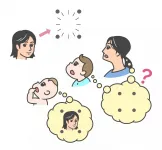
ELSE PRESS RELEASES FROM THIS DATE:
2021-06-25
In 2021 Acta Pharmaceutica Sinica B (APSB) is celebrating its 10th anniversary. The journal was founded with the goal of creating a global high-level forum centred around drug discovery and pharmaceutical research/application. APSB was included by Chemical Abstracts in 2011, accepted by PubMed Central in 2015, indexed by Science Citation Index in 2017 and has evolved to become one of the most important international journals in the field of pharmaceutical sciences.
Volume 11, issue 6 is a special issue marking the beginning of a series of celebratory events ...
2021-06-25
The development of therapeutic drugs for inflammatory bowel disease, an intractable immune disease, and multiple sclerosis - an autoimmune disorder - is gaining traction. A research team from the Department of Life Sciences at POSTECH and a joint research team at ImmunoBiome Inc. have uncovered that a yeast-derived polysaccharide mixture inhibits the onset and progression of immune disorders.
The number of cases of Crohn's disease and ulcerative colitis - both inflammatory bowel diseases - in Korea was about 18,000 and 37,000 respectively as of 2019, increasing about 2.3 times ...
2021-06-25
With a goal of breeding resilient crops that are better able to withstand drought and disease, University of California San Diego scientists have developed the first CRISPR-Cas9-based gene drive in plants.
While gene drive technology has been developed in insects to help stop the spread of vector-borne diseases such as malaria, researchers in Professor Yunde Zhao's lab, along with colleagues at the Salk Institute for Biological Studies, demonstrated the successful design of a CRISPR-Cas9-based gene drive that cuts and copies genetic elements in Arabidopsis plants.
Breaking ...
2021-06-25
Tsukuba, Japan - The COVID-19 pandemic has changed the way people eat, work, shop and go to school. Now, researchers from Japan have found surprising differences in the way people use healthcare services--including house calls from doctors.
In a study published this month in BMC Emergency Medicine, researchers from the University of Tsukuba have revealed that patterns in illness type and severity did change during the pandemic--with unexpected trends that may tell us about how people use health care services when personal contact carries inherent risk.
In Tokyo, private after-hours house call services (AHHC) provide in-home medical service outside of regular ...
2021-06-25
Quantum dots (QDs) are semiconductor particles only a few nanometers across that, thanks to their small size, exhibit peculiar optical and electronic properties due to quantum mechanics. With existing and foreseen applications in screens, lighting, lasers, and energy harvesting, research in quantum dots has been steadily progressing. In particular, colloidal QDs (CQDs) have been in the nanotechnology spotlight for over a decade.
CQDs are semiconductor nanocrystals that can be produced easily from solution-based processes, which make them suitable for mass production. However, for CQD-based devices to operate at their best, the quantum dots should be monodisperse--that is, ...
2021-06-25
The contemporary materials industry raises the problem of creating a microscopic theory that allows to describe the observed physicochemical properties of a wide class of substances which are in demand in modern industry, medicine, and agriculture. A general and consistent theory will help to obtain reliable information from experimental data on the structure of matter, existing interactions and dynamic processes occurring in it, which can help in the synthesis and quality control of prospective materials.
The study of the molecular structure of a substance and its intermolecular interactions is one of the most important and interesting tasks facing modern science. Of particular ...
2021-06-25
Medical materials that can be inserted into the human body have been used for decades in the field of regenerative medicine - for example, stents that can help dilate clogged blood vessels and implants that can replace teeth or bones. The prolonged use of these materials can result in serious adverse effects and loss of various functions - for example, inflammatory responses, generation of fibrous tissues around the material, and generation of blood clots that block blood vessels.
Recently, a Korean research team has drawn attention for developing a technology to reduce ...
2021-06-25
Curtin University research has found tiny amounts of gold can be trapped inside pyrite, commonly known as 'fool's gold', which would make it much more valuable than its name suggests.
This study, published in the journal Geology in collaboration with the University of Western Australia and the China University of Geoscience, provides an in-depth analysis to better understand the mineralogical location of the trapped gold in pyrite, which may lead to more environmentally friendly gold extraction methods.
Lead researcher Dr Denis Fougerouse from Curtin's School of Earth and Planetary Sciences ...
2021-06-25
Effective diagnostics, therapies and treatments for diseases and infections could increasingly involve re-engineering the body's internal biomechanisms at their most basic chemical and molecular foundations.
Growing knowledge about the body's biological processes is increasing the possibilities for restoring human health, says Xiao Wang, an associate professor of biomedical engineering in Arizona State University's Ira A. Fulton Schools of Engineering. He and a team of researchers are exploring ways to trigger and control cell differentiation and transition to unlock properties that may change bioengineers' approach to diagnostics, ...
2021-06-25
PITTSBURGH, June 25, 2021 - It is widely assumed that Americans' sexual activity took a nosedive during the early chaotic months of the coronavirus pandemic. But a new study from the University of Pittsburgh School of Medicine challenges this popular narrative.
In a research letter published in the Journal of Internal Medicine, scientists from Pitt and UPMC found that some people were having more sex during the pandemic than ever before. That group? Older men with erectile dysfunction.
"People's sexual lives contribute to the psychosocial fabric of society," said senior author Benjamin Davies, M.D., director of the Urologic Oncology Program at ...
LAST 30 PRESS RELEASES:
[Press-News.org] Babies can see things that adults cannot
Visual perception changes drastically in the second half of the first year of life

